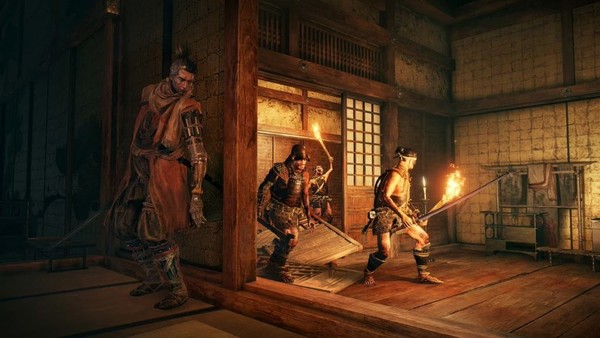Sekiro: Shadows Die Twice Review - 7 Ups & 3 Downs
3. Stealth Is A Welcome Addition

Although stealth always has had a presence in the Soulsborne games, it could never be truly relied upon. Sekiro has a massive emphasis on using stealth right from it's very beginning, and the resulting gameplay strengthens the narrative as a whole.
Sekiro is a shinobi, a warrior who will defeat his enemies by any means necessary, not above resorting to what the samurai might call dishonourable tactics. Not only is stealth a useful way to thin enemies ranks, it's also a hugely fun way of playing the game.
With the mobility being as flexible as it is, you can often get a lethal deathblow by stealthing behind your enemies, or even on to buildings on top of them. The environment of the villages and cliffs surrounding them is so well designed, that there are always a few ways that you can approach a group of enemies, and there is usually a safe option to pick off one or two straggling enemies from a safe, stealthy place. Enemy A.I. is very clever, but also easily manipulated as if it were a real person, and therefore easy to predict, but still able to surprise you.
Coming from someone who usually can't be bothered with stealth in games, and always prefers to tackle a situation heads-on, guns-blazing, it says a lot when I say that I absolutely adore the stealth in this game. It almost turns the action gameplay into a sort of puzzle-solving, and it is at home in the soulsborne combat style very comfortably.
Not only is stealth a great addition to combat, but also to the exploration and world-building. Shadows Die Twice rewards players who take the time to explore every nook and cranny of its vast, populated world, and you can stealth up behind enemies to learn useful hints as to how to defeat powerful enemies, or how to find valuable treasures.